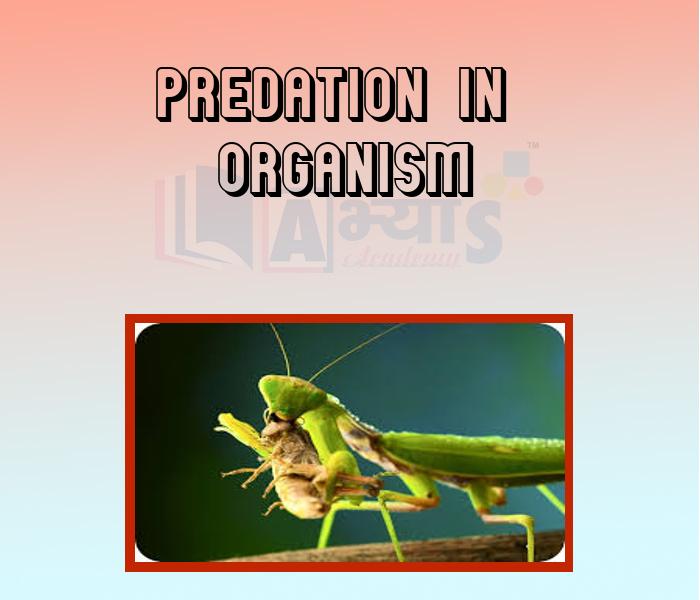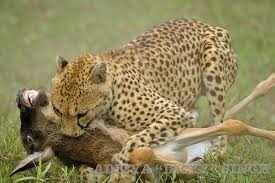Predation in Organism





Predation in Organism
Predation refers to a flow of energy between two organisms, predator and prey. In this interaction, the prey loses energy, and the predator gains energy. There are different type of predators . These predators can be carnivores, herbivores, parasites etc.
Adaptations in predators :
The predators use camouflage that helps them to hide from the prey so that they can make a sudden attack. This also prevents them from any dangerous defense mechanism a predator might have.
Their mechanical adaptations such as sharp teeth, claws, thick skin and faster speed and superior strength help them to take over the prey.
The chemical adaptations include venom, toxins and poison to kill the prey. They have also evolved chemical adaptations that protect them from the chemical defense of the prey. Eg : monarch butterflies feed on the milkweed plant that contain poison. They are evolved such that they are not affected by it.
When one organism kills and eats another, the attacker is called the predator and the one being eaten is called the prey. This feeding relationship is known as predation.

When one organism eats the other organism, such type of relationship is known as _________________. | |||
| Right Option : B | |||
| View Explanation | |||
In___________________ type of interaction, interacting species remain stay closer together
| |||
| Right Option : A | |||
| View Explanation | |||
Predators which consume almost everything are _________________.
| |||
| Right Option : A | |||
| View Explanation | |||
Students / Parents Reviews [10]
Abhyas Methodology is very good. It is based on according to student and each child manages accordingly to its properly. Methodology has improved the abilities of students to shine them in future.

Manish Kumar
10thMy experience with Abhyas academy is very good. I did not think that my every subject coming here will be so strong. The main thing is that the online tests had made me learn here more things.

Hiya Gupta
8thOne of the best institutes to develope a child interest in studies.Provides SST and English knowledge also unlike other institutes. Teachers are co operative and friendly online tests andPPT develope practical knowledge also.

Aman Kumar Shrivastava
10thIt was good as the experience because as we had come here we had been improved in a such envirnment created here.Extra is taught which is beneficial for future.

Eshan Arora
8thMy experience was very good with Abhyas academy. I am studying here from 6th class and I am satisfied by its results in my life. I improved a lot here ahead of school syllabus.

Ayan Ghosh
8thIt was a good experience with Abhyas Academy. I even faced problems in starting but slowly and steadily overcomed. Especially reasoning classes helped me a lot.

Cheshta
10thMy experience with Abhyas is very good. I have learnt many things here like vedic maths and reasoning also. Teachers here first take our doubts and then there are assignments to verify our weak points.

Shivam Rana
7thAbhyas is a complete education Institute. Here extreme care is taken by teacher with the help of regular exam. Extra classes also conducted by the institute, if the student is weak.

Om Umang
10thA marvelous experience with Abhyas. I am glad to share that my ward has achieved more than enough at the Ambala ABHYAS centre. Years have passed on and more and more he has gained. May the centre flourish and develop day by day by the grace of God.

Archit Segal
7thIt has a great methodology. Students here can get analysis to their test quickly.We can learn easily through PPTs and the testing methods are good. We know that where we have to practice
